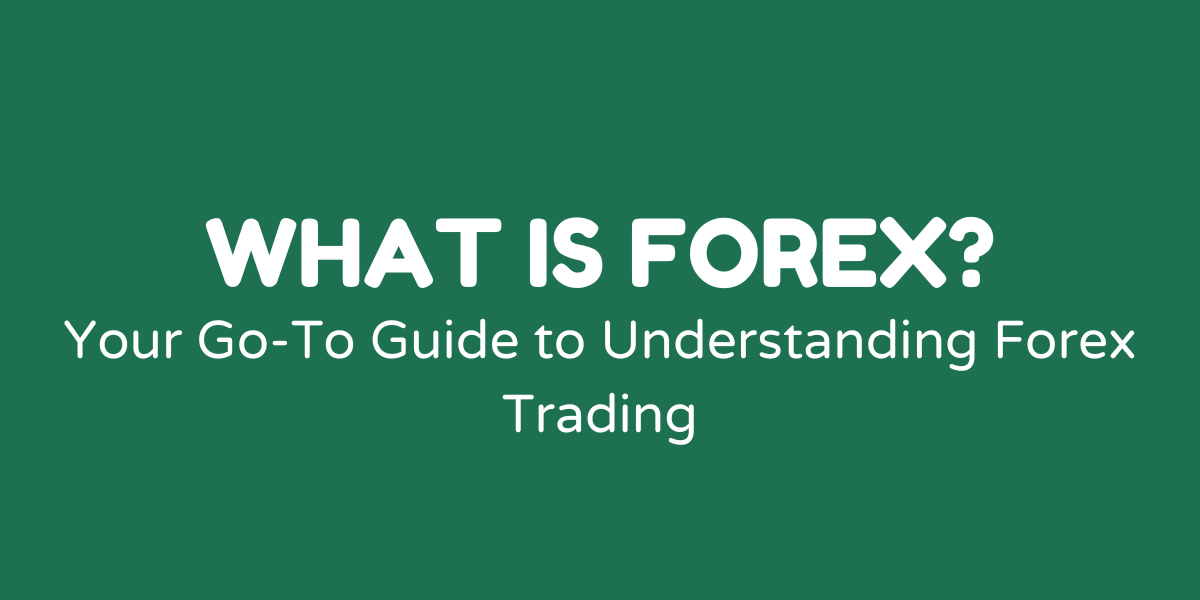Fast Travel
The Potential 📈
Yoooo! If you're completely new to trading, welcome. If you’ve been around the block a few times, welcome. And especially if you feel like you've hit a dead end… Welcome! I don't normally stop for hitchhikers but in this case, hop on in!. Trading changed my life (it will continue to do so), and it will change yours.
Well… only if you want to change, right?
There are countless ways to trade Forex, and it can definitely feel overwhelming at first. One strategy here, another there? then you’re trying to trade with 50+ indicators on your chart buying and selling at the same damn time.
Think of the Forex market as the vehicle that will take you to any destination you have in mind and on your way to that destination the journey from point A to Point B is packed with endless opportunities to make money. Traders can make money from these currency exchanges without even leaving their bed. Buying low, Selling high, and cashing in on the differences.
Easy! right? Not one bit…. ALTHOUGH!
With dedication, discipline, and a solid grasp of Forex basics—like risk management and trading psychology—you can then start to build consistent income, grow your wealth, and potentially achieve financial freedom (My Point B destination). But remember, Forex trading comes with its own set of risks and challenges. It's crucial to keep a level head and tackle these obstacles strategically.
This first newsletter will be a crash course on what FOREX is. Expect a lot more content like this, designed to give you the essentials to understand what Forex is and how to make money within the industry. I'll keep updating these posts to ensure everyone stays informed and up-to-date with the latest changes in the FOREX world.
After trading for over 4.5 years, I’ve decided it’s time to take action and start writing to build a community where we can all learn from each other and inspire one another to achieve what we all want most: to be consistently profitable. My goal is to give you all the must-know information about Forex trading without the fluff. By the end of each article, you'll have what you need to keep moving forward in your trading journey. So, let's get started!
💷 What is it? 💴
Forex, or foreign exchange, is all about buying and selling currencies on the global market to turn a profit. It's the largest financial market in the world, with a daily trading volume of over $6 trillion. The Forex market is open 24 hours a day, five days a week, spanning major financial hubs like London, New York, Tokyo, and Sydney. Saturdays and Sundays are available to trade too but only if you're into Crypto. Unlike trading stocks or commodities, Forex trading involves swapping one currency for another. You'll see currencies traded in pairs, like EUR/USD (Euro/US Dollar) or GBP/JPY (British Pound/Japanese Yen). More on currencies HERE.
Forex Hours & Trading Sessions
So yeah, 24 hours a day, five days a week, but that does not mean the whole world is running at that same time you get your day started.
Trading sessions occur around the world, at different times, which allows traders to work their magic at whatever time is most convenient with their daily routines. These trading sessions are:
GMT, or Greenwich Mean Time, is used as a global time standard. Universal Time (UTC) is now more commonly used for scientific and international time standards. Click here to find your Time Zone.
Tokyo Session (12 a.m. - 9 a.m. GMT): It's the first to open, setting the tone for the day with Asian currency pairs.
London Session (8 a.m. - 5 p.m. GMT): Liquid and volatile.This session is crucial due to its overlap with both Asian and North American markets. It's here that the majority of Forex trading volume takes place.
New York Session (1 p.m. - 10 p.m. GMT) This session covers the late overlap with London. The New York session is known for high trading volume and is important for transactions involving the USD. Many opportunities in this session.
Sydney Session (10 p.m. - 7 a.m. GMT): Little volume, but the session starts the trading day, focusing on the Pacific markets and setting initial trends.
The Whales 🐳
We do not move the markets, we are simply just trying to ride the wave created by the larger whales. The main whales in the Forex market include:
Financial Institutions: Large entities trading large volumes and providing liquidity. Some examples are:
Banks: Large banks like JPMorgan Chase, Citibank, and Deutsche Bank conduct substantial amounts of currency trading, both for their clients and for their own accounts.
Corporations: Multinational companies engage in Forex to facilitate international trade and investment, hedging against currency fluctuations.
Brokers: They act as intermediaries in Forex trading, providing platforms for retail traders and executing trades on behalf of larger institutions.
Governments and Wealth Funds: They participate to manage reserves and influence economic conditions.
Retail (Individual) Traders: They participate through brokers, leveraging the internet to trade on margin and speculate on currency movements. We are here.
Why Trade it?
Liquidity: With so much money flowing, you can jump in and out of trades easily.
Low Costs: Forget hefty commissions; you only pay the spread, the difference between buying and selling prices. Start trading with just $50.
-Flexibility: Trade anytime, anywhere.
Leverage: Control big positions with a small investment. But watch out—leverage can work both ways!
📱 Tools to Getting Started 💻
Computer
If you have no access to a computer/laptop a cell phone is really all you need but when learning, a larger screen is recommended.
Internet Connection
Trading Account
Personal Account
Prop Firm Challenge
General Knowledge about FOREX
A Trading Plan
This is Literally all you need to get set up but if you would like step by step instructions, check out this POST.
🤑 Making Money in Forex 🤑
So now that you’re all set up for success time to start spamming the buttons! The are only two ways to make money in Forex. You can either Buy or Sell a currency. When placing a “Buy”, you are anticipating that price to go up and when placing a “Sell” you are anticipating price to go down. Every currency pair has its own chart you can analyze and every chart moves to their own rhythm and beat. Analyzing the charts can be broken up into types of analysis, Fundamental and Technical. There is a third type; Sentimental, closer to fundamentals, but we won’t worry about that right now.
Fundamental Analysis:
Focuses on economic data and news events. Traders analyze economic indicators such as FOMC, NFP, GDP, inflation rates, employment figures, and central bank policies. Most news events are planned events that can push the market up or down depending on its relation to the currency being affected.
Technical Analysis:
This involves analyzing price charts and using past history to determine the future of price. Indicators can be implemented onto the chart to assist in the analysis to identify trading opportunities. Common tools include moving averages, support and resistance levels, trend lines, and oscillators like the Relative Strength Index (RSI) and Moving Average Convergence Divergence (MACD).
Having a general understanding of Fundamentals is great to have in the arsenal as a trader, but I primarily utilize Technical analysis to formulate my bias in the market.
📓 The Trading Plan 📔
Now that you know all you have to do is just Buy or Sell when the market presents itself, you can start making millions right?
Not quite….. 😁
The main reason the percentage of profitable traders is so low is because the majority believe trading forex is a get rich quick skill one can just pick up in a matter of a few months. Some may get lucky but that luck will dry out without a proper trading plan.
Your Trading Goals and Objectives: Have a clear vision of what you want to get out of trading:
Financial Freedom | To Travel the World | Leave the your 9-5
Help your family | Get your dream car
Need capital to start a business | Make other Investments
Trading style: Are you a Scalper, Intraday, or Swing trader?
Scalpers: They take numerous small trades throughout the day, aiming to profit from minor price fluctuations in the market.
Intraday: They open and close positions within the same trading day, capitalizing on short-term market movements without holding overnight positions.
Swing: They hold positions for several days or weeks, seeking to profit from medium-term price trends and market swings.
Trading Strategy: The confluences or conditions you learn that will prompt you to buy or sell.
Risk Management: Controlling your emotions to prevent large losses in your account. Setting stop-loss orders to limit potential losses and using proper position sizing to ensure you never risk too much on a single trade.
Review and Back Testing: Regularly assessing and updating your trading edge to keep it effective.
💭 The Mindset 🧠
Now that you have the plan in place, what else could you possibly need???
An unshakable mindset… 😤
In order to achieve this mindset one needs experience in the trenches. Just like playing sports (If you have ever played before) there is no other experience than in-game/live experience, but in the case of Forex trading, using real capital. Anyone can back test and trade on a demo account forever, but the moment they trade with real dinero, all that back testing and demo trading will go out the window (for some). For me, I would like to say I was part of the majority, the moment I traded with real money, I broke every damn rule I had at the time 😆. By the time I had blown the account, first of many more, I was completely dumbfounded and had no idea what just happened.
If you’d like to explore the depths of trading psychology, check out this POST to find out how I overcame poor decision making due to an untrained mind in the markets.
💹 Lets start printing money 💲
So you know what trading Forex is. ✅
You understand that you need a plan. ✅
You have a list of tools to set you up and start trading. ✅
And you now know that you need a strong mindset to trade a live account ✅
The money should start printing now right??
Success in Forex trading comes from a combination of thorough market knowledge, effective strategies, disciplined risk management, and most importantly continuous learning. The Forex market is constantly evolving, and staying ahead requires continuous learning and adaptation. Engage in regular self-education through webinars, online courses, and trading communities. Keep up with market news and trends to stay informed about potential opportunities and risks. Even after 4 years of trading I’m till tweaking my trading plan. By understanding market dynamics and developing a robust trading plan and mindset, traders can navigate the complexities of the Forex market and achieve consistent profitability.
🥛 Don Leche’s Takeaways 🥛
Forex trading is an exciting and rewarding journey. TRUS. By understanding the market, choosing the strategy that fits your style, leveraging technology and analysis, practicing solid risk management, and committing to continuous learning, you can unlock the potential of what I like to call “Unlimited Access”.
Disclaimer:
I am not a licensed financial expert. The content I share is based on my personal experience and should not be considered financial advice. Trading in financial markets involves significant risk, and it is crucial to use proper risk management and conduct your own research before making any trading decisions. I am not responsible or liable for any financial losses you may incur from following the information provided. Always trade responsibly, and remember that past performance does not guarantee future results.

